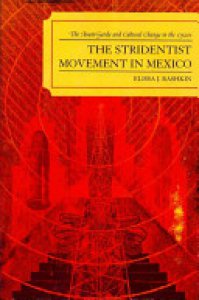In the aftermath of the Mexican Revolution, Stridentism (estridentismo) burst on the scene in the 1920s as an avant-garde challenge to political and intellectual complacency. Led by poets Manuel Maples Arce, Germán List Arzubide, and Salvador Gallardo, prose writer Arqueles Vela, painters Fermín Revueltas, Ramón Alva de la Canal, Leopoldo Méndez, and Jean Charlot, and sculptor Germán Cueto, the Stridentists rejected academic conservatism, celebrated modernity and technological novelties such as the radio, cinema and the airplane, and sought to transform not only written and visual language but also everyday life through the creation of new aesthetic spaces and new approaches to the urban environment. From 1921 to 1927, they issued manifestos, published magazines and books, organized performances, and served as a critical force in Mexican art and literature that was known and admired in intellectual circles throughout the Americas. Initially active in Mexico City and Puebla, Stridentism reached its peak in Xalapa, Veracruz, where its members collaborated with the state government to the extent that critics accused them of "stridentizing" the state. By 1928 the movement had dispersed, but its iconoclastic spirit lived on in other forms, merging into and influencing other movements of the 1930s and beyond.
This book is a history of Stridentism as a multifaceted cultural movement deeply imbued with the spirit of 1920s Mexico. Bringing together original interdisciplinary research and critical analysis, it explores the ways in which the Stridentists pushed the limits of the collective imagination in an era of conflict and change.



